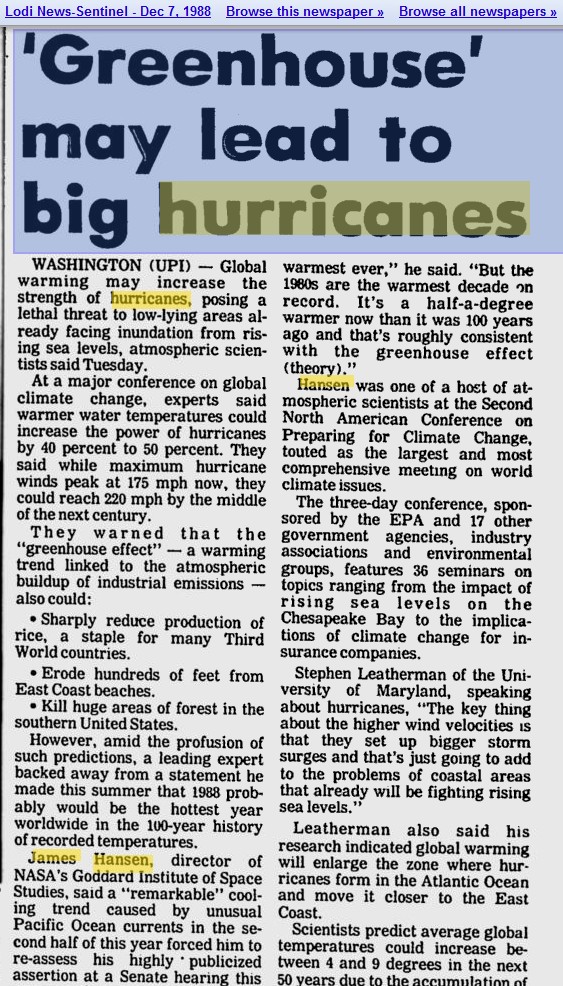According to Hansen, the 1880s was tied for the coldest decade at -0.27 C anomaly. It was also the decade which the United States was hit by the most hurricanes – twenty-six including six major hurricanes. CO2 levels were below 300 ppm at the time.
Nobel Prize Winners like Al Gore tell us that higher temperatures and CO2 mean more and stronger hurricanes, because they are complete morons and have no idea what they are talking about.
1880 Aug # TX, S3 3 1880 Aug FL, SE2, NE1, NW1 2 1880 Sep NC, 1 1 1880 Oct FL, NW1 1 1881 Aug GA, 2; SC, 1 2 1881 Sep NC, 2 2 1882 Sep FL, NW3; I-AL, 1 3 1882 Sep LA, 2; TX, N1 2 1882 Oct FL, NW1 1 1883 Sep NC, 2; SC, 1 2 1885 Aug SC, 3; NC, 2; GA, 1; FL, NE1 3 1886 Jun TX, N2; LA, 2 2 1886 Jun FL, NW2; I-GA, 1 2 1886 Jun FL, NW2; I-GA, 1 2 1886 Jul FL, NW1 1 1886 Aug TX, C4 4 1886 Sep # TX, S1, C1 1 1886 Oct LA, 3; TX, N2 3 1887 Jul FL, NW1; I-AL, 1 1 1887 Aug * NC, 1 1 1887 Sep TX, S2 2 1887 Oct LA, 1 1 1888 Jun TX, C1 1 1888 Aug FL, SE3, SW1; LA2; I-MS, 1 3 1888 Oct FL, NW2, NE1 2 1889 Sep LA, 1 1




These are the only ones of which the news has come to Harvard,
And there may be many others, but they haven’t been discovered.
With apologies to Tom Lehrer.
With their new hypersensitve detection equipment, the National Hurricane Center should have no trouble coming up with 26 hurricanes. Even if hurricane force winds are contained within only .001% of the storm.
Not one named storm in the Atlantic since June 26…is this a record or what? A sign of climate change, no doubt.
This is exactly what they predicted
About a third of the measurements for the 19th century were below 300 ppm. The average for the 19th century was about 335 ppm. See chart from which the ~280 ppm (or 292 per Callendar) was cherry-picked:
http://www.warwickhughes.com/icecore/call2.jpg